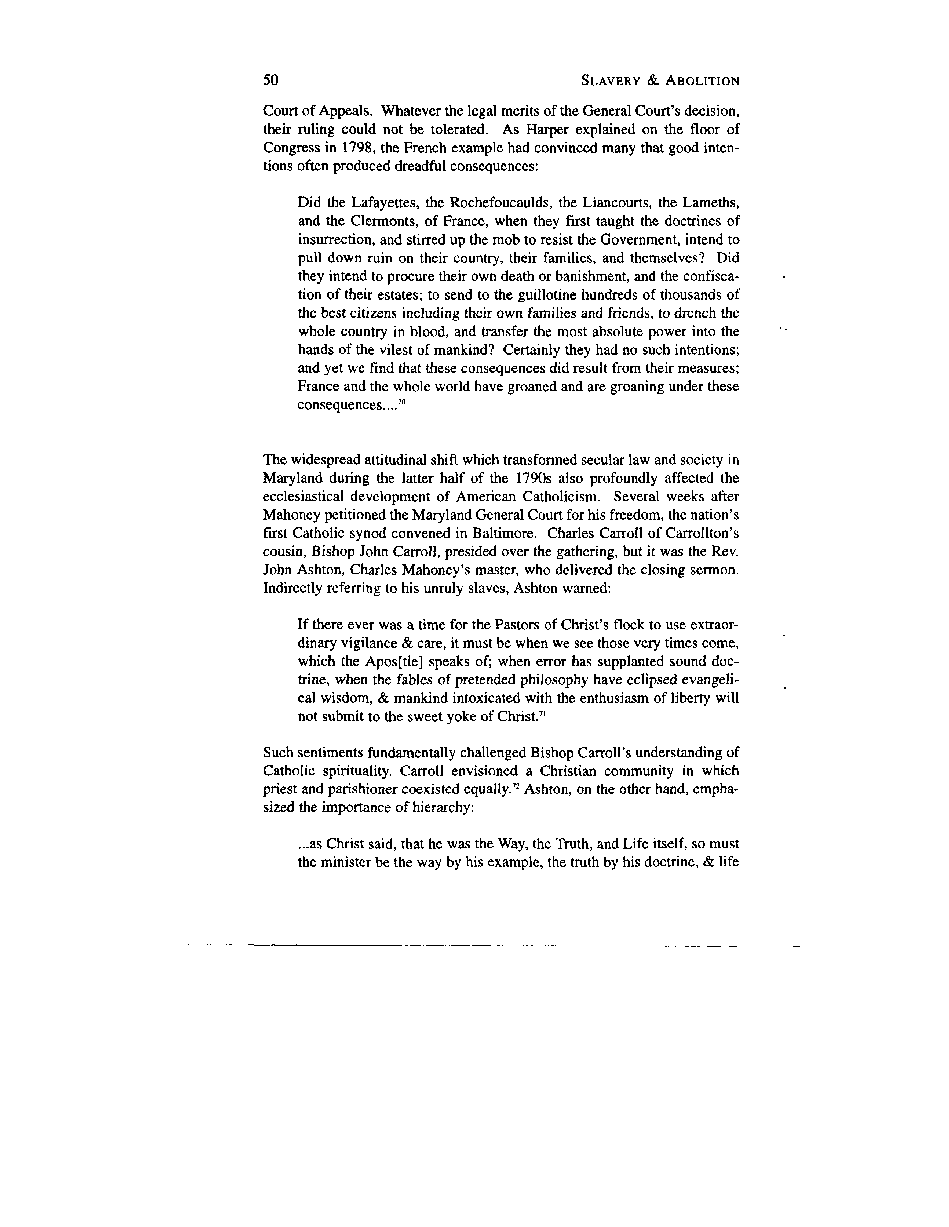|
50 SLAVERY & ABOLITION
Court of Appeals. Whatever the legal merits of the General Court's decision,
their ruling could not be tolerated. As Harper explained on the floor of
Congress in 1798, the French example had convinced many that good inten-
tions often produced dreadful consequences:
Did the Lafayettes, the Rochefoucaulds, the Liancourts, the Lameths,
and the Clermonts, of France, when they first taught the doctrines of
insurrection, and stirred up the mob to resist the Government, intend to
pull down ruin on their country, their families, and themselves? Did
they intend to procure their own death or banishment, and the confisca-
tion of their estates; to send to the guillotine hundreds of thousands of
the best citizens including their own families and friends, to drench the
whole country in blood, and transfer the most absolute power into the
hands of the vilest of mankind? Certainly they had no such intentions;
and yet we find that these consequences did result from their measures;
France and the whole world have groaned and are groaning under these
consequences....70
The widespread attitudinal shift which transformed secular law and society in
Maryland during the latter half of the 1790s also profoundly affected the
ecclesiastical development of American Catholicism. Several weeks after
Mahoney petitioned the Maryland General Court for his freedom, the nation's
first Catholic synod convened in Baltimore. Charles Carroll of Carrollton's
cousin, Bishop John Carroll, presided over the gathering, but it was the Rev.
John Ashton, Charles Mahoney's master, who delivered the closing sermon.
Indirectly referring to his unruly slaves, Ashton warned:
If there ever was a time for the Pastors of Christ's flock to use extraor-
dinary vigilance & care, it must be when we see those very times come,
which the Aposftle] speaks of; when error has supplanted sound doc-
trine, when the fables of pretended philosophy have eclipsed evangeli-
cal wisdom, & mankind intoxicated with the enthusiasm of liberty will
not submit to the sweet yoke of Christ.71
Such sentiments fundamentally challenged Bishop Carroll's understanding of
Catholic spirituality. Carroll envisioned a Christian community in which
priest and parishioner coexisted equally.72 Ashton, on the other hand, empha-
sized the importance of hierarchy:
...as Christ said, that he was the Way, the Truth, and Life itself, so must
the minister be the way by his example, the truth by his doctrine, & life
�
|

